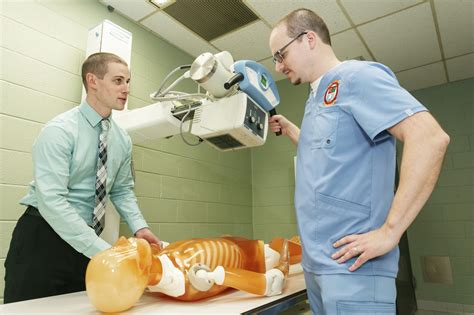Radiologic technology is a vital part of the healthcare industry, playing a crucial role in diagnosing and treating various medical conditions. As a result, the demand for skilled radiologic technologists continues to grow. If you're interested in pursuing a career in radiologic technology, the Salt Lake Community College (SLCC) Radiologic Technology Program is an excellent option to consider. In this article, we'll delve into the program's overview and requirements, helping you make an informed decision about your educational and career goals.
What is Radiologic Technology?
Radiologic technology, also known as radiography, involves using medical imaging modalities such as X-rays, computed tomography (CT) scans, magnetic resonance imaging (MRI), and other technologies to produce images of the body's internal structures. These images help healthcare professionals diagnose and treat various medical conditions, from broken bones to cancer. Radiologic technologists are responsible for preparing patients for imaging procedures, operating the imaging equipment, and ensuring that the images are of high quality.
SLCC Radiologic Technology Program Overview
The SLCC Radiologic Technology Program is designed to provide students with the knowledge, skills, and competencies necessary to succeed as radiologic technologists. The program is accredited by the Joint Review Committee on Education in Radiologic Technology (JRCERT) and is offered at the Jordan Campus and the Larry H. Miller Campus.
The program is a two-year Associate of Applied Science (AAS) degree that includes both classroom and clinical instruction. Students learn about patient assessment, radiation safety, and the principles of radiologic technology, as well as develop skills in operating imaging equipment and producing high-quality images.

Admission Requirements
To be eligible for the SLCC Radiologic Technology Program, applicants must meet the following requirements:
- Have a high school diploma or equivalent
- Complete the required prerequisite courses, including anatomy, physiology, and algebra
- Achieve a minimum cumulative GPA of 2.5
- Take the Health Education Systems, Inc. (HESI) A2 exam and score a minimum of 75 in each section
- Submit a program application and pay the required fee
- Participate in a program orientation and advising session
Program Curriculum
The SLCC Radiologic Technology Program curriculum includes a combination of classroom and clinical instruction, covering topics such as:
- Patient assessment and management
- Radiation safety and protection
- Radiographic procedures and positioning
- Imaging modalities and equipment operation
- Image analysis and critique

Clinical Experience
Clinical experience is an essential component of the SLCC Radiologic Technology Program. Students participate in clinical rotations at various healthcare facilities, gaining hands-on experience in operating imaging equipment and producing high-quality images.
Certification and Licensure
Upon completing the program, graduates are eligible to take the American Registry of Radiologic Technologists (ARRT) certification exam. Certification is required to practice as a radiologic technologist in many states, including Utah. SLCC program graduates have a high pass rate on the ARRT exam, with many going on to secure employment in the field.

Career Opportunities
Radiologic technologists are in high demand, with the Bureau of Labor Statistics predicting a 9% growth in employment opportunities through 2030. Graduates of the SLCC Radiologic Technology Program can pursue careers in various healthcare settings, including hospitals, clinics, and imaging centers.
Salary Expectations
According to the Bureau of Labor Statistics, the median annual salary for radiologic technologists is around $62,000. However, salaries can vary depending on factors such as location, experience, and employer.

Conclusion
The SLCC Radiologic Technology Program offers students a comprehensive education in radiologic technology, preparing them for successful careers in the healthcare industry. With its strong reputation, experienced faculty, and state-of-the-art facilities, SLCC is an excellent choice for those interested in pursuing a career in radiologic technology.
If you're considering a career in radiologic technology, we encourage you to learn more about the SLCC program and its requirements. With the right education and training, you can join the ranks of skilled radiologic technologists making a difference in the lives of patients every day.





What is the average salary for radiologic technologists?
+The average salary for radiologic technologists varies depending on factors such as location, experience, and employer. According to the Bureau of Labor Statistics, the median annual salary for radiologic technologists is around $62,000.
What are the admission requirements for the SLCC Radiologic Technology Program?
+To be eligible for the SLCC Radiologic Technology Program, applicants must meet the following requirements: have a high school diploma or equivalent, complete the required prerequisite courses, achieve a minimum cumulative GPA of 2.5, take the HESI A2 exam and score a minimum of 75 in each section, submit a program application and pay the required fee, and participate in a program orientation and advising session.
What kind of jobs can I get with a degree in radiologic technology?
+Graduates of the SLCC Radiologic Technology Program can pursue careers in various healthcare settings, including hospitals, clinics, and imaging centers. Radiologic technologists are in high demand, with the Bureau of Labor Statistics predicting a 9% growth in employment opportunities through 2030.
